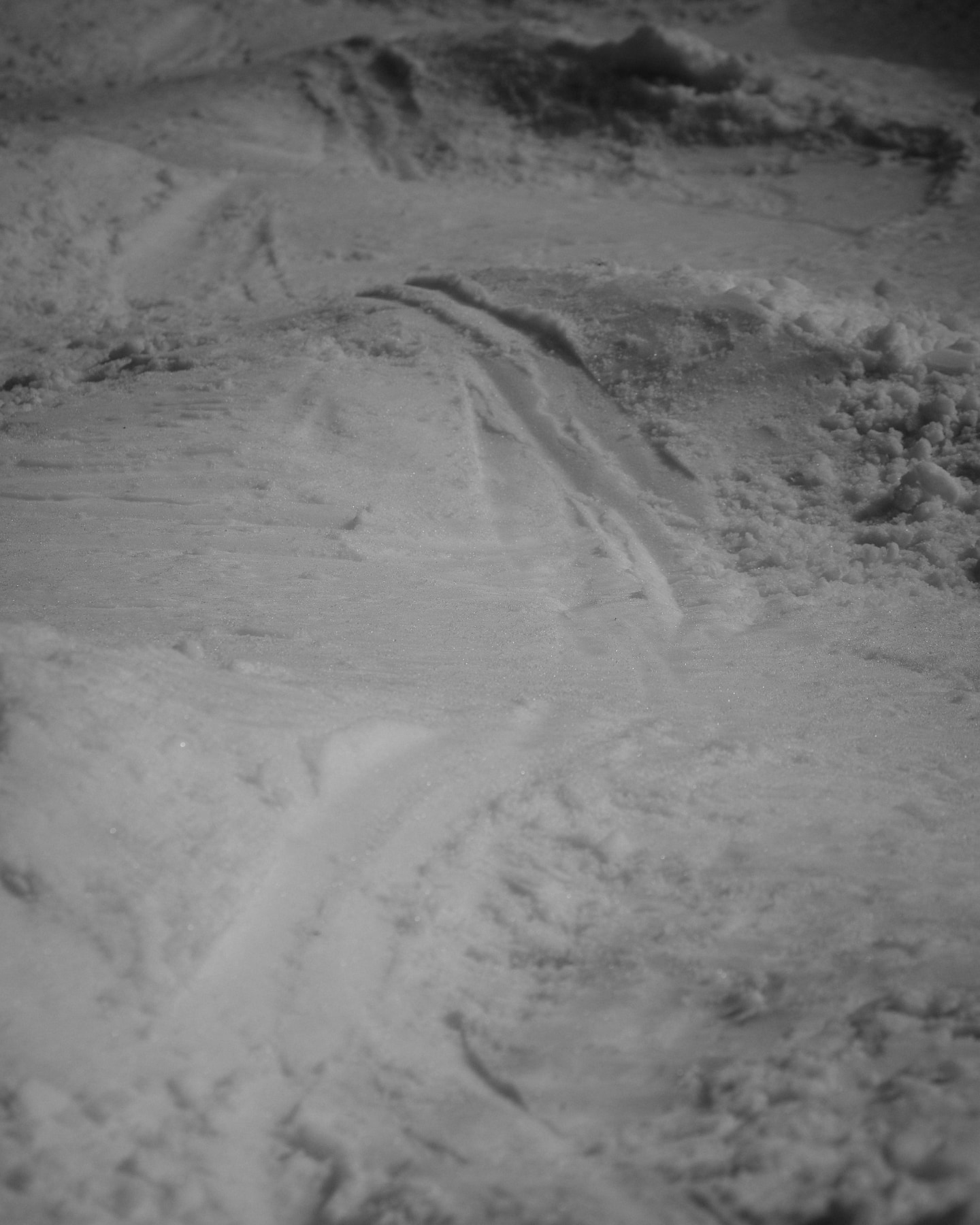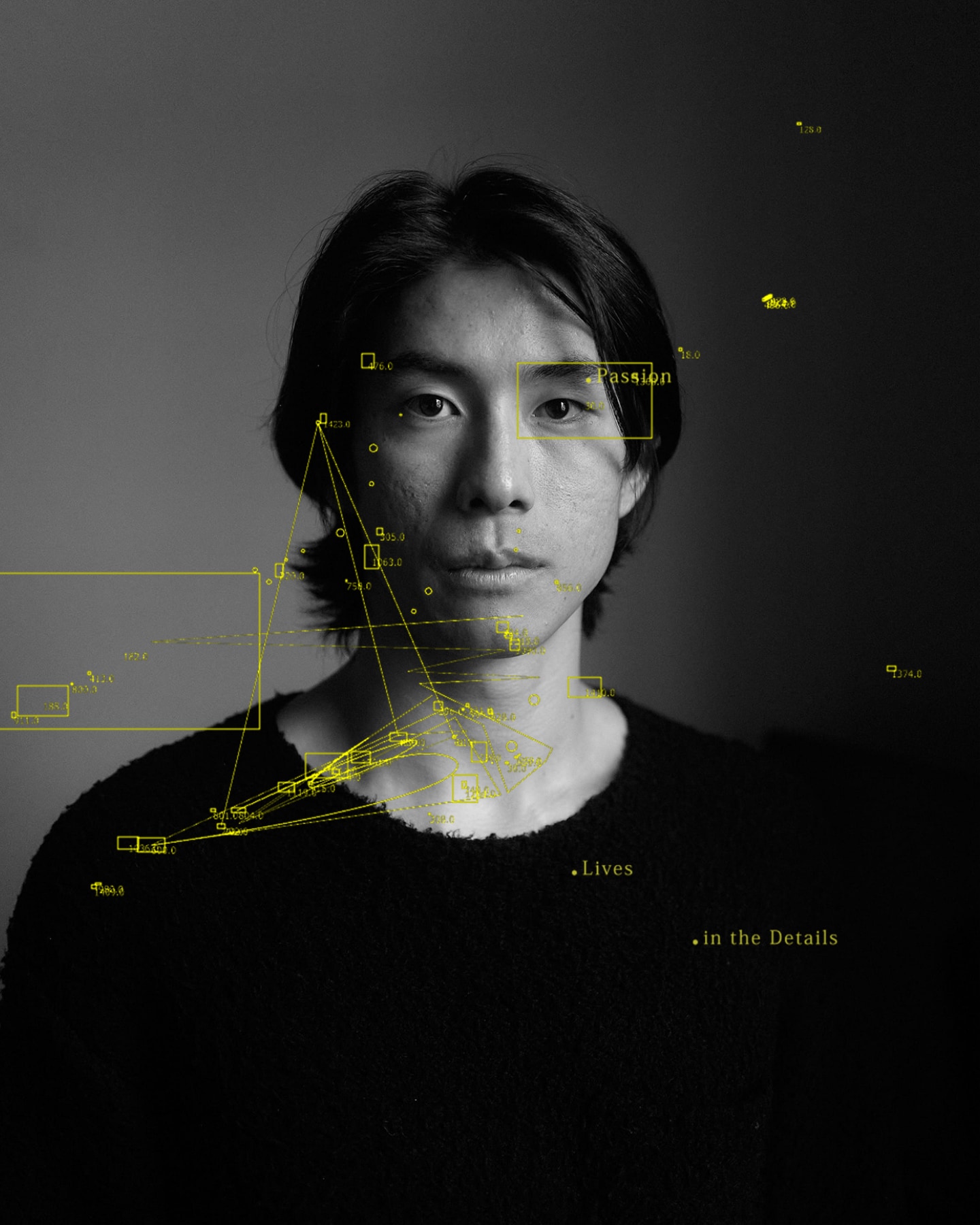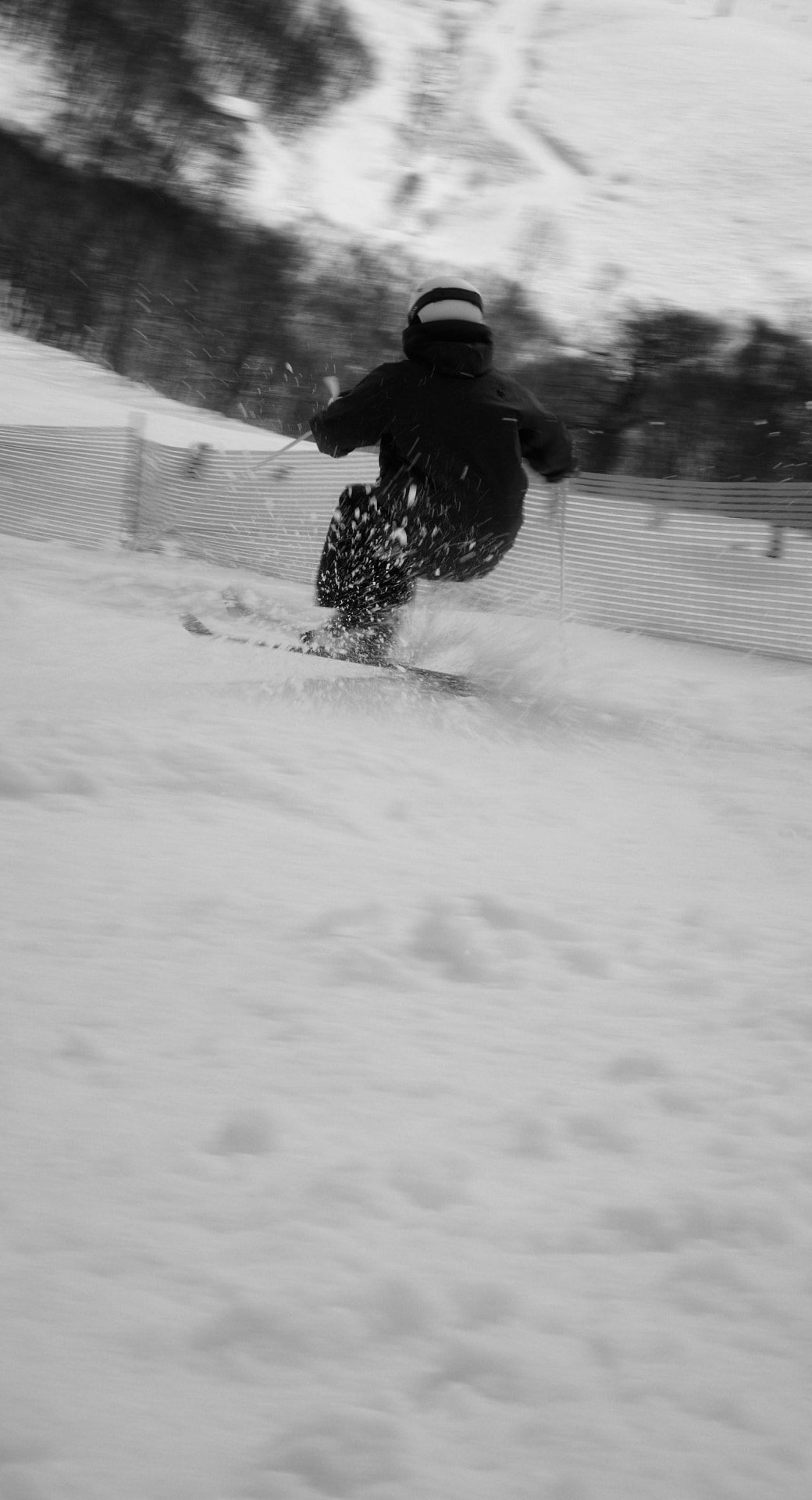Ikuma Horishima Passion Lives in the Details
In the 2023-24 season, Ikuma Horishima, a Goldwin athlete, secured the overall championship in the World Cup rankings for freestyle skiing and mogul events. As a world champion, he is entering a new season with his mind firmly set on constantly reaching greater heights.


Mogul skiing involves skiing down a course approximately 200 metres long, with a slope of about 30 degrees, featuring regularly spaced bumps and two jumps. Competitors are scored on the basis of three elements: “speed,” “air height and difficulty,” and “turn beauty”. Achieving perfection in all elements would of course yield high scores, but due to the nature of mogul skiing, these three elements intricately influence each other. For instance, while higher speed can lead to greater jump height and easier tricks, it can also result in overspeed, causing mistakes in turns, which then affect landing and the quality of subsequent turns.
Mogul skiing is a sport in which competitors aim to beat their rivals by skilfully maintaining the balance of these seemingly contradictory elements, while showcasing high technical ability in all aspects and appealing to the judges with their unique style.
When asked to articulate his pursuit of perfect skiing, Ikuma Horishima provided a remarkably simple answer:
“Faster, Higher, and More Beautiful.”
His commitment to pursuing perfect skiing is uncompromising. His dedication and passion extend to every detail.
In this article, we delve into his skiing philosophy regarding the three elements of “speed,” “height,” and “beauty,” as well as his mentality of constantly questioning his true worth.

01_ SPEED
Passion Lives in the Details


01_SPEED :
Faster
“In major competitions, speed becomes my main focus. This means I don't hold back. For example, when I achieve high scores by controlling my speed to advance to the finals, the only option left to increase my score is to go faster. That was exactly the situation when I won the bronze medal at the Beijing Olympics.”
Mogul skiing consists of two events, one of which is dual mogul, where two competitors ski simultaneously. Although the scoring criteria are the same as in the single event, the visual difference in speed between the two skiers becomes apparent, influencing the scores.
“In dual mogul, it might be strategically wise and yield higher scores to slightly reduce speed and execute beautiful turns, but when skiing alongside another competitor, the desire to finish first naturally arises. Achieving top scores in speed and beauty is the ideal way to win in dual mogul. I take pride in being among the fastest globally, but when a competitor tries to overtake me, I feel compelled to increase my speed. In those moments, there’s a fear of the approaching jump, which inevitably leads me to jump higher, making the whole move more daunting. After such races, I often reflect on how I managed to ski like that. Competitions like those leave me so excited that I can't sleep.”

(02_ AIR)
Passion Lives in the Details



02_ AIR :
Higher
“I believe that jump height is my greatest strength, and I want to stand out from other competitors through this height. Typically, the landing zone for jumps is a smooth, easy-to-land-on snow surface, but jumping high can lead to you overshooting the zone. Landing on the bumps is challenging and dangerous, but at the rear of the bump is a tiny area that is steep enough to land on. I aim to fly towards that spot. By keeping my gaze on the snow surface until the last moment before executing a trick, I can see where I want to land. It’s a split-second decision, but I skilfully combine my speed and take-off strength to land at the best spot. I believe this is a technique that only I can execute. Ultimately, my philosophy is that if I can win by jumping high, it’s a perfect score.”

(03_ TURN)
Passion Lives in the Details




03_TURN :
More Beautiful
“Even in mogul skiing, I aim to use both edges effectively to carve beautiful arcs. Each bump has its own unique shape, with some being indented or banked, but I want to create smooth carving turns that match the slope. The front of the bump absorbs impact, but to withstand that shock, I need to press down firmly on my edges. If I can stay on the surface of the bump, the pressure on the board will naturally allow it to follow the slope as I enter the rear side of the bump. If I fail to maintain that pressure and bounce off, I won't be quick enough to catch the snow surface of the next bump. Carving is typically associated with horizontal turns, but mogul skiing involves vertical carving. It’s not just about sliding vertically, I need to adjust my knee angle to match the bump's slope and carve my turns. I want to create two lines that follow the shape of the bumps. This smooth descent is a skill that requires countless hours of practice, so I believe very few people can achieve it. My ideal is to ski in a way that the edge lines on the snow surface I’ve skied on remain continuous and beautiful.”

When Ikuma Horishima speaks about the allure of mogul skiing, he does so in a calm tone, explaining its depth. He seems to reflect on himself from a distance, yet his absolute confidence in his efforts is palpable in his words.
Asked again to define perfect skiing, he provided a more abstract answer:
“Ultimately, I envisage skiing as a beautiful flow of water. Water creates a smooth line on the slope, flowing down without stopping. In mogul skiing, I believe that pursuing speed through a smooth descent, free of unnecessary shocks or rebounds, is the correct approach.”
Now at the pinnacle of his sport, Ikuma Horishima is not chasing anyone else. Instead, he is facing his own challenges, accepting no compromises as he pursues his aim to be a unique skier on the world stage.


